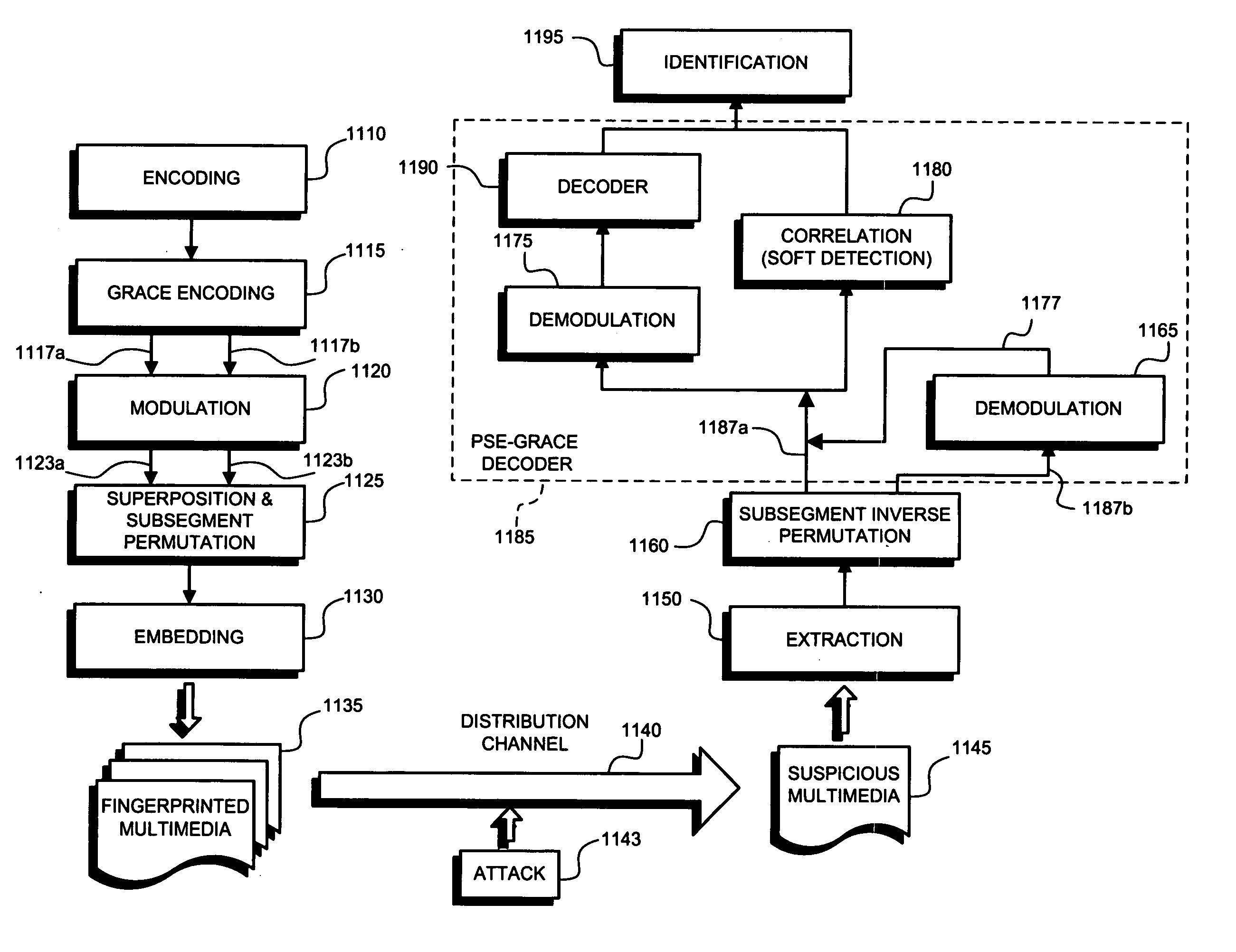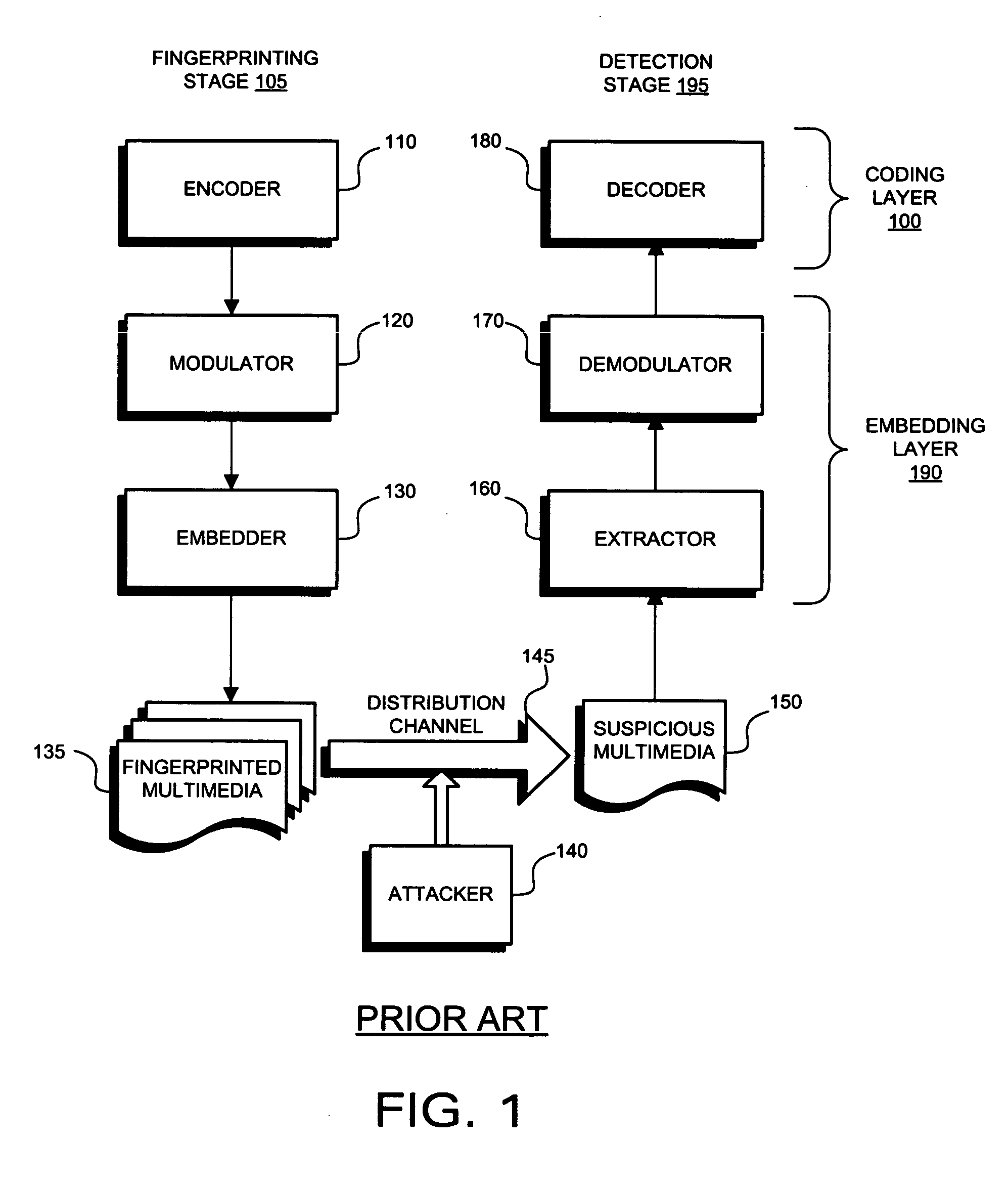Method for fingerprinting multimedia content
a fingerprinting and multimedia technology, applied in the field of fingerprinting multimedia content, can solve the problems of increasing linearly the number of basis sequences required for its implementation and the computational complexity of detection, and the inability to detect fingerprint code symbols correctly,
- Summary
- Abstract
- Description
- Claims
- Application Information
AI Technical Summary
Problems solved by technology
Method used
Image
Examples
Embodiment Construction
[0036] It is an object of the present invention to prevent colluders from exploiting the code-level limitations of ECC based fingerprinting by way of interleaving collusion. The present invention takes advantage of existing code construction techniques and adds additional measures that will be referred to herein as “permuted subsegment embedding” or PSE. In that certain embodiments of the invention are implemented over ECC based fingerprinting, it is believed beneficial to first describe certain features and shortcomings of ECC based fingerprinting.
[0037] In the system of FIG. 1, each fingerprinted segment can be modeled as
yjk=usym(j,k)+xk (1)
where xk is kth segment of host signal, and yjk is the kth fingerprinted segment for the jth user. The function sym(j,k) is used to retrieve the symbol from the kth segment of the jth user's codeword, and usym(j,k) is the spread spectrum sequence corresponding to the symbol value. The symbols are taken from a set of q mutually orthogonal spr...
PUM
 Login to View More
Login to View More Abstract
Description
Claims
Application Information
 Login to View More
Login to View More - R&D
- Intellectual Property
- Life Sciences
- Materials
- Tech Scout
- Unparalleled Data Quality
- Higher Quality Content
- 60% Fewer Hallucinations
Browse by: Latest US Patents, China's latest patents, Technical Efficacy Thesaurus, Application Domain, Technology Topic, Popular Technical Reports.
© 2025 PatSnap. All rights reserved.Legal|Privacy policy|Modern Slavery Act Transparency Statement|Sitemap|About US| Contact US: help@patsnap.com



